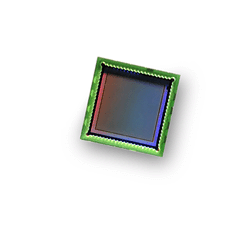The promise of less-invasive medical imaging
Endoscopic imaging allows medial doctors to peer inside the human body, examining the interior of some organs and helping to diagnose medical conditions more effectively and earlier in the treatment process.
But endoscopy has two inherent problems that make procedures like colonoscopies, bronchoscopies, gastroscopies, and similar uncomfortable or even painful and potentially dangerous in rare cases. Advanced semiconductor designs, including devices like OmniVision's OV6930 ultracompact CMOS image sensors, are helping to elevate the intrinsic challenges associated with these procedures and thereby benefit patients.

Endoscopy is invasive
Although modern medical device makers have done their best to minimize scope size and temperature, by its very nature any form of endoscopy is going to be invasive. Somehow, the camera must make its way inside the patient.
CMOS imaging technology may be able to further shrink the size of endoscopic devices by placing a single small form factor imager at the end of a scope. The aforementioned OV6930 is just 1.8 x 1.8 mm square, thanks in part to OmniVision's low-light pixel technology. Endoscopes built with the OV6930 might be as narrow as 2.6 mm in diameter complete. While patients and doctors would probably like to see the total diameter of an endoscope eventually shrink to below a single millimeter, this OmniVision solution is still enabling a less invasive medical device than some current solutions.
In addition, the OV6930 is designed to send signals along a significant length of cabling, separating the image sensor from the image processing or other computing that may be required. By reducing the number of electronic components needed in the actual scope device, designers may be able to reduce the scope's temperature, further improving patient experience.
CMOS image sensors have also been used to develop endoscopic alternatives, like pill cameras for viewing the gastrointestinal tract.
The small risk of cross-contamination
While one must be very careful not to overstate the risk, the endoscopes currently being used in hospitals and clinics the world over could potentially spread germs from one patient to another since these devices are reused across hundreds of procedures or more.
Of course, each scope is thoroughly cleaned and examined between uses, but nonetheless a small possibility of cross-contamination does exist. Relatively low-cost CMOS sensors could make it feasible to develop disposable endoscopes, wherein the imager-containing portion of the scope — the portion that actually makes contact with the patent — could be disposed of after each and every use, eliminating any opportunity for cross contamination however small.
There may be an economic benefit for hospitals and patients too, since cleaning an endoscope could actually be more expensive than using disposable scope ends.
Semiconductors enable medial improvements
Although patients will probably never take the time to thank electrical engineers or semiconductor makers for the relative comfort and safety of minimally invasive endoscopy, it is important to remember that innovations like OmniVision's OV6930 do enable important improvements in medical devices and the quality of medical care.
Armando Roggio
Advertisement
Learn more about Electronic Products MagazineOmniVision Technologies





